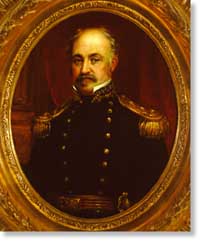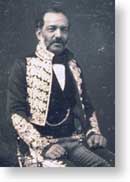  
  
California on the Eve
 The Gold Rush dramatically affected California's
environment, but much had been changed well before 1848. Primeval California was a unique
and extraordinarily diverse natural environment, with a remarkable range of geography and
geology, of plants and animals, of weather and natural resources. California had been
inhabited or visited by many different people before gold was discovered. Each new group
of people brought its own system of values. The Gold Rush dramatically affected California's
environment, but much had been changed well before 1848. Primeval California was a unique
and extraordinarily diverse natural environment, with a remarkable range of geography and
geology, of plants and animals, of weather and natural resources. California had been
inhabited or visited by many different people before gold was discovered. Each new group
of people brought its own system of values.
 
They related differently
to the beauty of California and its immense bounty of natural resources. Each saw a
different kind of "gold" to be reaped from the land. They also related
differently to each other. California Indians had been here for more than ten thousand
years.
 They
encountered successive waves of explorers, would-be colonizers, and immigrants, including
Spanish missionaries, Mexican and Californio rancheros, Russian hunters, and American
trappers, traders and farmers. Who was a Californian? And what did California mean to
them? They
encountered successive waves of explorers, would-be colonizers, and immigrants, including
Spanish missionaries, Mexican and Californio rancheros, Russian hunters, and American
trappers, traders and farmers. Who was a Californian? And what did California mean to
them?
Top: Portrait of General John A. Sutter, 1856, Collection
of Oakland Museum of California
Middle Left: Maidu Cooking Basket, Collection of Oakland Museum of California
Middle Right: Flicker Band, Collection of Oakland Museum of California
Bottom: Andres Pico, Collection of Los Angeles County Museum of Natural History
Nature | Californio
| California Indian |